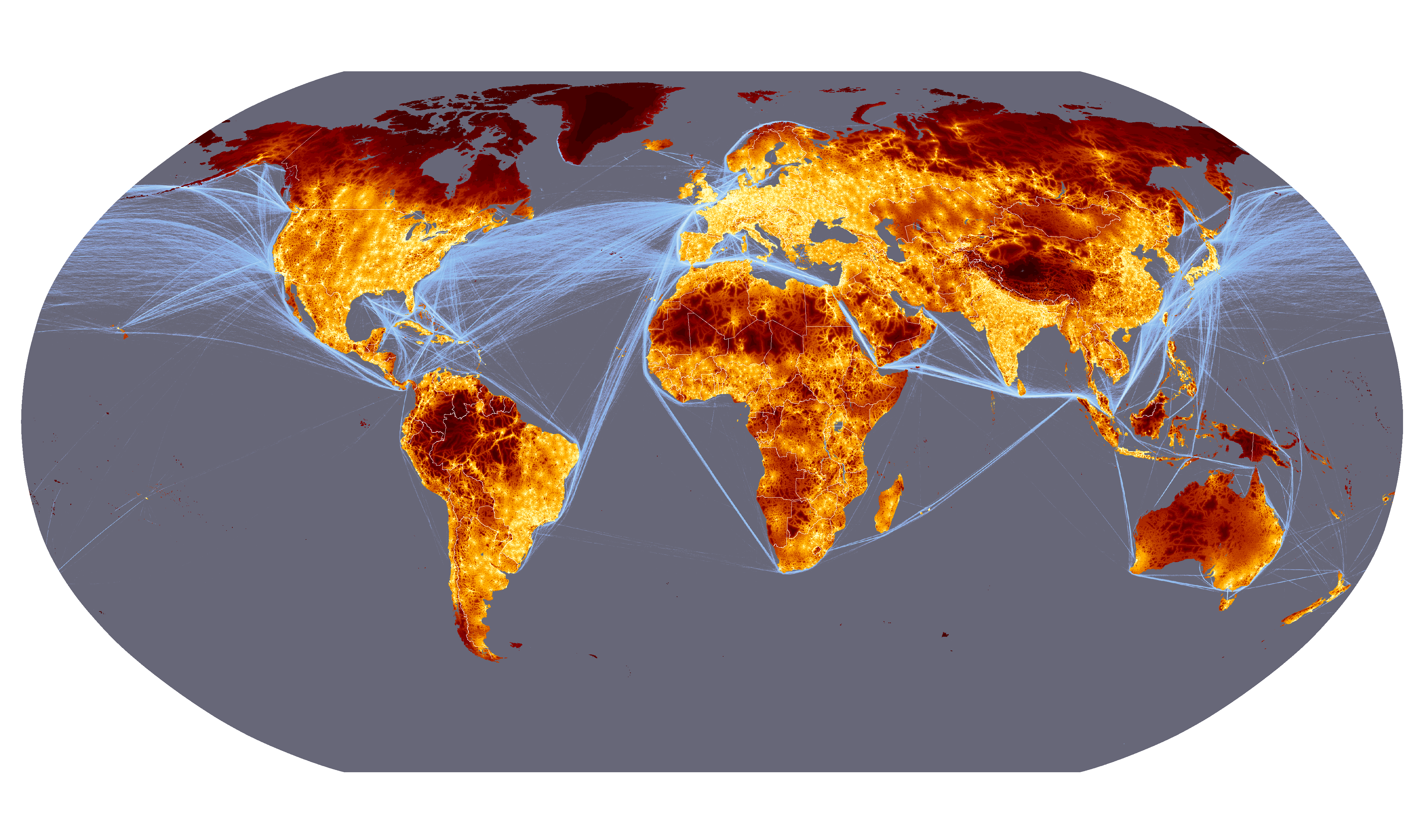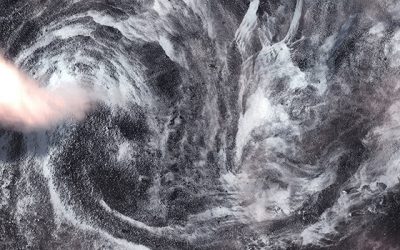We often think of planets as being in perfect kinetic and gravitational equilibrium, but this is seldom the case. Bronislaw Szerszynski shows us that all mobilities occurring in the Earth are, in fact, achievements of a far-from-equilibrium planet.
In terms of mobilities, the Earth must surely be one of the most complex places in the universe. It is home to a dizzying range of moving entities, ranging from the abiotic (magma, wind, water, precipitation, dust, minerals, energy), through the biotic (viruses, microorganisms, animals, spores, seeds, biomass, genes, culture) to the technological and informational (vehicles, artefacts, tools, machines, data). These mobile entities move in diverse and complex patterns of motion, organised into systems of mobility that sometimes synchronise in mutual interdependence, sometimes disrupt each other. An increasing proportion of this mobility is caused by human activity, although in sheer quantitative terms this is still swamped by the amount of matter moved by nonhuman agency. Is it possible to talk about all of these within a common framework? And does it make sense to use a planetary paradigm to do this?
The term ‘planetary mobilities’ may conjure up an image of the perfect, clock-like motion of the heavens – what the ancients called the ‘superlunary’ world. Isolated in a near-vacuum, the planets are for all intents and purposes in kinetic and gravitational equilibrium, and thus move in predictable and reversible Newtonian motion. Planets never forget where they have been and always know where they are going. But this god-like power of memory and foreknowledge is also a terrible limitation: while in equilibrium motion, planets can never forget, and never learn (Prigogine and Stengers 1984, pp. 305–6).
The term ‘planetary mobilities’ may conjure up an image of the perfect, clock-like motion of the heavens – what the ancients called the ‘superlunary’ world.
However, within planets we find ‘sublunary’ forms of mobility, still utterly conditioned by planetary existence, but far more interesting. In the dense media of fluid planetary compartments, and under far-from-equilibrium conditions, the perfect, reversible god-like motion of the planets is all but impossible; moving entities diverge from their path in what Lucretius called the ‘clinamen’, losing not just their direction but their very motion in cascading eddies (Serres 2000). Yet over the long lifetime of planets this forgetting also allows them to develop their own unique history, and their own distinctive powers of motion and memory.
As César Hidalgo (2015) argues, the places in the universe which can become information-rich (and thus exhibit complex mobilities) are those like the Earth that do not just have an applied energy gradient but also have a combination of fluid and solid phases of matter. The constant flow of solar energy into the Earth system creates thermal gradients which in turn drive the constant fluid motion of the atmosphere. Such far-from-equilibrium conditions spontaneously give rise to low-entropy, information-rich correlated motion such as cyclones. But the main way that information and order can become ‘sticky’, endure, and thereby become the basis for new levels of self-organisation, is to become stored in solids.
On the Earth, this can be seen in the interaction between rainfall and landscape, which over millennia has produced river basins organised into complex fractal networks that drain in optimal ways (Rodríguez-Iturbe and Rinaldo 1997). Prefiguring the complex relationship between living organisms and their environment, the ability of the water to find its way back to the sea involves a distributing of powers between the water and the land, built up through repeated motion across a ‘taskscape’ which is itself a sedimentation of all such prior movements (Ingold 2000, p. 195). A very different kind of solid –that of the aperiodic genetic code of DNA – was able to store information generated by fluid processes of chemical autocatalysis, and thus create the conditions for the emergence of life, natural selection and the biosphere. And, as Hidalgo argues, human economies capture the flow of the imagination in information-rich artefacts which circulate and carry with them the possibility of new complex behaviours.
The sheer complexity of Earthly mobilities does not make a planetary analysis impossible; it makes it necessary.
We can see all mobilities occurring in the Earth as achievements of a far-from-equilibrium planet, under the thermodynamic imperative to dissipate energy gradients, self-organising over deep, geological time and thereby creating its own unique history and set of powers. I would go as far as to say that the sheer complexity of Earthly mobilities does not make a planetary analysis impossible; it makes it necessary. To paraphrase Theodosius Dobzhansky, ‘nothing in mobilities makes sense except in the light of planetary evolution’.
References
- Hidalgo, César A. (2015) Why Information Grows: The Evolution of Order, from Atoms to Economies, London: Penguin Books.
- Ingold, Tim (2000) The Perception of the Environment: Essays in Livelihood, Dwelling and Skill, London: Routledge.
- Prigogine, Ilya and Isabelle Stengers (1984) Order Out of Chaos: Man’s New Dialogue with Nature, Toronto: Bantam Books.
- Rodríguez-Iturbe, Ignacio and Andrea Rinaldo (1997) Fractal River Basins: Chance and Self-Organization, Cambridge: Cambridge University Press.
- Serres, Michel (2000) The Birth of Physics, Manchester: Clinamen Press.
Bronislaw Szerszynski is Senior Lecturer in the Department of Sociology at Lancaster University. His research draws on the social sciences, humanities, arts and natural sciences to explore the changing relationship between humans, environment and technology.
Photo 1: Manmade wildlife corridor. Credit: Crossing Roads.
Photo 2: A visualization of global weather conditions. Credit: Cameron Beccario.
Photo 3: World Migrations Map (detail). Credit: paulmirocha.com. Full image here.




